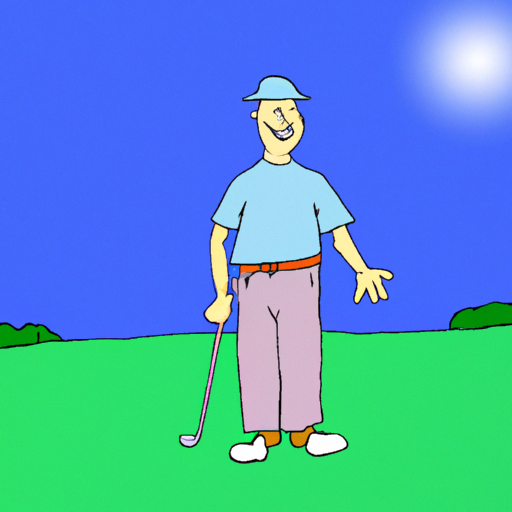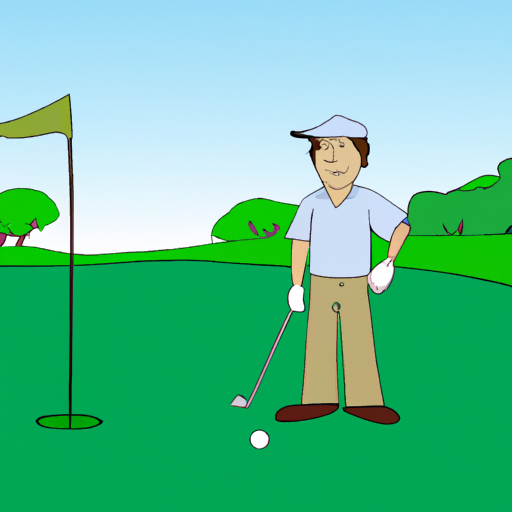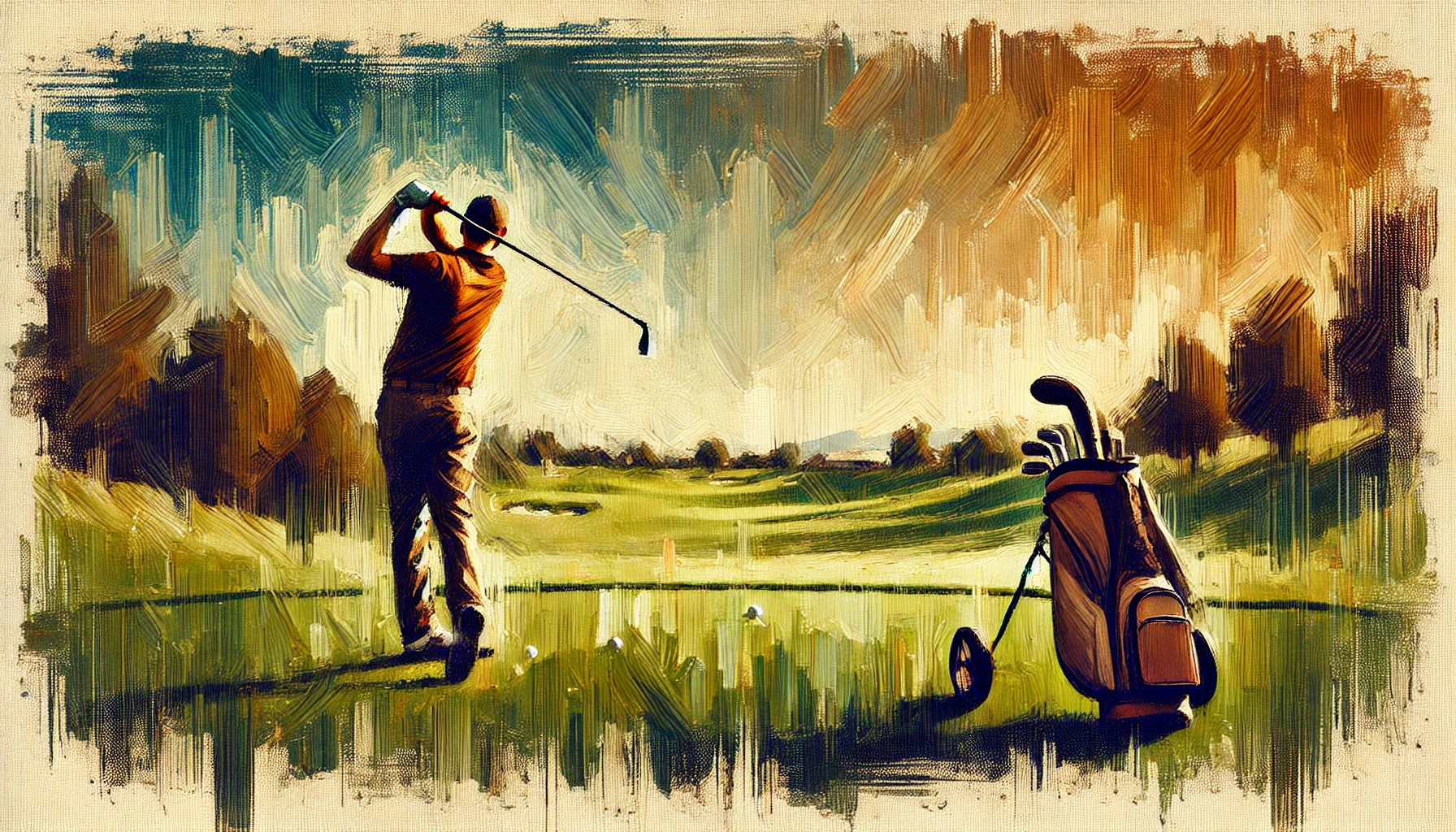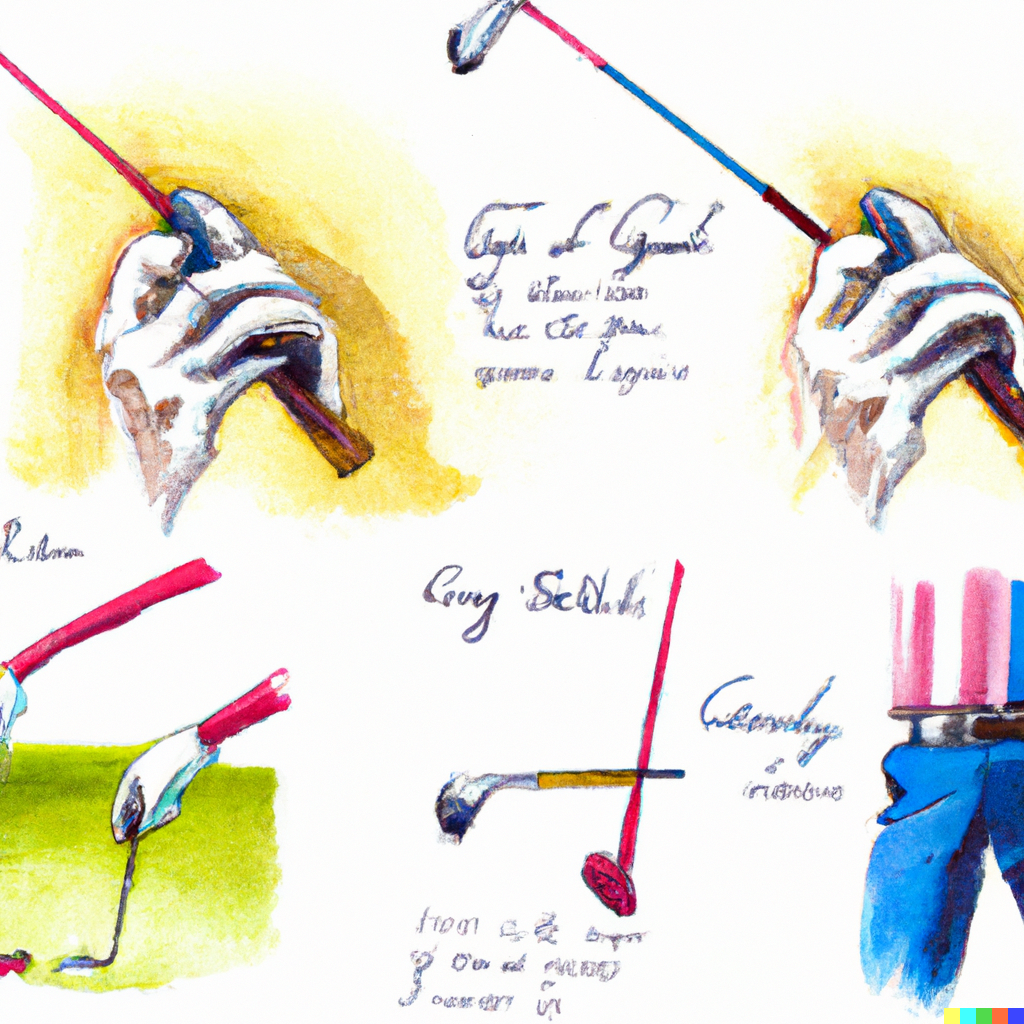- Home
- Golf Swing
- Biomechanics of Golf Swing
Mastering the Biomechanics of Your Golf Swing
Are you struggling with your golf swing, feeling like you're not getting the power or accuracy you desire?
You're not alone.
Many golfers, both beginners and seasoned players, often find themselves in a similar predicament.
But what if I told you that the secret to a powerful and accurate golf swing lies in understanding the biomechanics of the swing?
The world of golf is filled with countless tips and tricks aimed at improving your swing. But the truth is, without a solid understanding of the biomechanics involved in a golf swing, all these tips can only get you so far.
Biomechanics, the science of movement, can be your secret weapon to unlocking a powerful and accurate swing. It's about understanding how your body moves during a swing and how to optimize these movements for maximum power and accuracy.
Now, imagine being able to step onto the golf course with confidence, knowing that you have the knowledge and understanding to execute a powerful and accurate swing. Imagine the look on your buddies' faces as you consistently hit long drives down the fairway.
This is not just a fantasy. With a solid understanding of the biomechanics of a golf swing, this can be your reality. So, are you ready to take your golf game to the next level?
 A golfer in action, showcasing the power of a biomechanically optimized swing.
A golfer in action, showcasing the power of a biomechanically optimized swing.Master the Art of Golf: Unraveling the Biomechanics of Your Swing
Hello there, I'm Johnny, a weekend golfer with a passion for the game that's been growing for over 25 years.
I've been where you are, inconsistent and afraid of humiliating myself on the first tee. I've felt the frustration of not being able to hit long drives down the fairway, and the disappointment of high scores.
But I didn't let these challenges deter me. Instead, I delved into the world of golf biomechanics, and it changed my game forever.
I remember the days when I was just starting out, struggling to understand why my shots were so inconsistent. I would watch other golfers, their swings seeming so effortless, and wonder what I was doing wrong. I read books, watched videos, and even took lessons, but nothing seemed to click. I was on the verge of giving up, thinking maybe golf just wasn't for me.
But then, I stumbled upon the concept of biomechanics. I learned that the golf swing isn't just about the club and the ball, it's about how your entire body moves. I started studying the biomechanics of the golf swing, learning about the different phases and how each one impacts the trajectory and distance of the ball. I began to understand why my shots were inconsistent and what I needed to do to improve.
Fast forward to today, and I'm a completely different golfer. I'm no longer afraid of the first tee. I can hit long drives down the fairway with confidence. And most importantly, I'm enjoying the game more than ever. I'm here to share my insights and help you improve your game.
Are you ready to get started?
The Basics of Biomechanics in Golf
Biomechanics is the science of movement. It's the study of how our bodies move and how different forces interact to create that movement. In golf, understanding biomechanics can be the key to improving your swing and overall performance.
But why is biomechanics so important in golf? Let me explain.
When you swing a golf club, you're not just moving your arms. You're rotating your torso, shifting your weight, and even using your feet to generate power. Each of these movements is governed by the principles of biomechanics. By understanding these principles, you can optimize your movements to create a more efficient and powerful swing.
But it's not just about power.
Biomechanics also plays a crucial role in accuracy. The angle of your clubface at impact, the path of your swing, and the spin you put on the ball are all influenced by biomechanics. By understanding how these factors work together, you can improve your accuracy and hit more fairways and greens.
The Four Main Phases of a Golf Swing
A golf swing can be broken down into four main phases: the setup or approach, the backswing, the downswing, and the follow-through. Each phase has its own biomechanical principles that can help improve your swing. Let's delve into each phase.
Setup or Approach
The setup is the foundation of your swing. Your body position, grip, and alignment all play a crucial role in the success of your swing. A proper setup puts your body in a position to execute an efficient and powerful swing.
During the setup, your feet should be shoulder-width apart, with your weight evenly distributed between them. Your knees should be slightly bent, and your spine should be tilted forward from the hips. Your arms should hang naturally from your shoulders, and your hands should grip the club firmly but not tightly.
Getting the setup right is crucial, as it sets the stage for the rest of your swing. If your setup is off, it can throw off your entire swing. So take the time to get your setup right. You’ve heard them talk about this before, right?
Backswing
The backswing is when the body begins to move the club. The goal is to coil your body, storing energy that will be released in the downswing. The biomechanics of the backswing involve the rotation of the torso, the bending of the right elbow (for right-handed golfers), and the hinging of the wrists.
During the backswing, your torso should rotate away from the target, while your arms lift the club. Your right elbow should bend, and your wrists should hinge, positioning the club above your right shoulder at the top of the backswing. Your weight should shift to the inside of your right foot.
The backswing is all about storing energy. The rotation of your torso, the bending of your elbow, and the hinging of your wrists all contribute to this energy storage. By maximizing your coil during the backswing, you can generate more power in the downswing.
Downswing
The downswing is where power is generated. The stored energy from the backswing is released, propelling the golf ball forward. The biomechanics of the downswing involve the uncoiling of the body and the straightening of the right arm, leading to the impact with the ball.
During the downswing, your torso should uncoil, rotating towards the target. Your right arm should straighten, and your wrists should unhinge, bringing the club down to the ball. Your weight should shift to your left foot, and your body should be square to the target at impact.
The downswing is all about releasing the stored energy from the backswing. The uncoiling of your torso, the straightening of your arm, and the unhinging of your wrists all contribute to this energy release. By optimizing your movements during the downswing, you can generate more power and hit longer drives.
Follow-through
The follow-through is the final phase of the swing, where the body finishes its rotation. The biomechanics of the follow-through involve the complete rotation of the body towards the target, indicating a balanced and controlled swing.
During the follow-through, your body should continue to rotate until it's facing the target. Your right foot should come up onto its toes, and your club should finish over your left shoulder (for right-handed golfers). Your body should be balanced, indicating a controlled swing.
The follow-through is often overlooked, but it's an important part of the swing. A good follow-through indicates a balanced and controlled swing, which can lead to more consistent shots. So don't neglect your follow-through. Practice it just as you would any other part of your swing.
 A golfer demonstrating perfect swing form, thanks to understanding the biomechanics of golf.
A golfer demonstrating perfect swing form, thanks to understanding the biomechanics of golf.The Role of Biomechanics in Maximizing Distance and Accuracy
Biomechanics not only helps improve your swing technique but also maximizes the distance and accuracy of your shots. By understanding how different biomechanical aspects contribute to the power and direction of your swing, you can make adjustments that lead to longer and straighter shots.
For example, by optimizing the rotation of your torso during the backswing and downswing, you can generate more power and hit longer drives. By controlling the angle of your clubface at impact, you can improve your accuracy and hit more fairways and greens.
But remember, improving your biomechanics isn't just about making big changes. Sometimes, small adjustments can lead to big improvements. So don't be afraid to experiment with different adjustments and see what works best for you.
Practical Tips to Improve Your Golf Swing Using Biomechanics
Now here comes the good part. Let's talk about some practical exercises and tips to improve the biomechanics of your golf swing.
1. Work on your flexibility and strength: A flexible and strong body allows for a more efficient and powerful swing. Incorporate exercises that improve your core strength and flexibility into your workout routine. Yoga and Pilates are great for improving flexibility, while weight training can help build strength.
2. Practice your swing motion: The more you practice your swing, the more ingrained it becomes in your muscle memory. Use training aids if necessary to ensure you're practicing the correct motion. There are many great training aids available that can help you improve your swing biomechanics.
3. Get professional help: Consider getting a golf lesson from a professional who understands the biomechanics of a golf swing. They can provide personalized advice and corrections to your swing. A professional can also help you understand your own unique swing biomechanics and how to optimize them.
Key Takeaways
Understanding the biomechanics of a golf swing can significantly improve your golf game.
By breaking down the swing into its main phases and understanding the biomechanical principles involved in each phase, you can make adjustments that lead to a more powerful and accurate swing.
So, are you ready to take your golf game to the next level with the power of biomechanics?
Onward to a better golf game!
FAQ: Understanding the Biomechanics of Golf Swing
What are biomechanical principles in golf?
What are biomechanical principles in golf?
Biomechanical principles in golf refer to the application of mechanical laws to the golfer's body movements during the swing. These principles include balance, coordination, flexibility, and power, which are all crucial for achieving an efficient and effective golf swing.
How do you practice golf swing mechanics?
How do you practice golf swing mechanics?
Practicing golf swing mechanics involves understanding and implementing the four main phases of a golf swing: the setup, backswing, downswing, and follow-through. Regular practice, ideally under the guidance of a golf instructor, can help improve your swing mechanics.
What is the force of a golf swing?
What is the force of a golf swing?
The force of a golf swing is generated by the golfer's body movements, particularly the rotation of the torso and the swinging of the arms and club. This force is transferred to the golf ball upon impact, influencing its speed, direction, and spin.
How do the arms move in the golf swing?
How do the arms move in the golf swing?
In a golf swing, the arms move in coordination with the body's rotation. During the backswing, the arms lift the club while maintaining a firm wrist position. In the downswing, the arms drop the club down and then extend fully during impact. In the follow-through, the arms continue their motion until the swing is completed.
What muscles are used in a golf swing?
What muscles are used in a golf swing?
A golf swing engages multiple muscle groups, including the core muscles for rotation, the leg muscles for stability and power, and the arm and shoulder muscles for controlling the golf club. Proper conditioning of these muscles can enhance swing performance and prevent injuries.
What is the role of biomechanics in maximizing distance and accuracy in golf?
What is the role of biomechanics in maximizing distance and accuracy in golf?
Biomechanics plays a crucial role in maximizing the distance and accuracy of golf shots. It provides both qualitative and quantitative evidence of the golfer's swing mechanics, helping identify areas for improvement. By optimizing body movements, golfers can increase their swing speed and control, leading to longer and more accurate shots.
What are the phases of a golf swing?
What are the phases of a golf swing?
A golf swing consists of four main phases: setup, backswing, downswing, and follow-through. The setup involves positioning the body and aligning the club with the ball. The backswing sets the motion for the swing, the downswing is where the club is swung towards the ball, and the follow-through is the continuation of the motion after the ball has been hit.






















